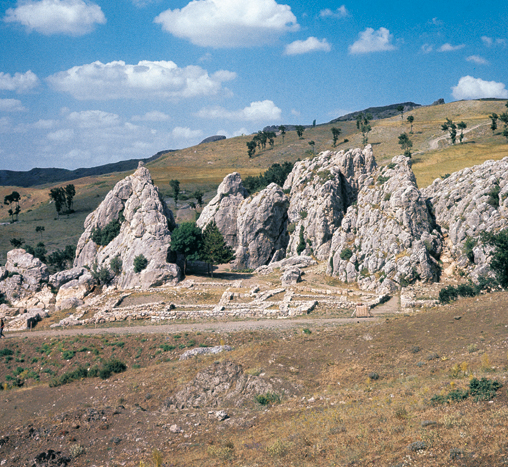Image Details

Sonia Halliday Photographs/Photo by F.H.C. Birch
Some 125 miles east of modern Ankara, the rocky outcroppings of Yazilikaya rise dramatically from the Anatolian plateau. The sanctuary’s two natural stone chambers (A and B on the plan) were probably first formed by a brook or stream. Sometime in the 13th century B.C. the Hittite king Hattushili III began developing the site into a national religious shrine. He commissioned most of the site’s rock carvings and sculptures and constructed an elaborate series of temples and protective walls around its main chamber, effectively sealing off the sanctuary from the rest of the world. More sculptures and reliefs were probably added by his son and successor, Tudhaliya IV. While most of the buildings erected at Yazilikaya have long since crumbled away, their ancient foundations remain. The ruins of several temples and protective walls are clearly visible in the foreground of this photo and in the related plan.
